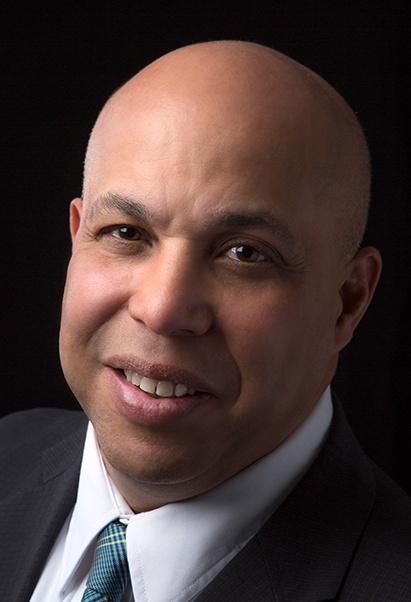Industry Insights
January 25, 2022
Duff: NFIB v. Department of Labor, OSHA in a Few Sentences
- National
- - 0 shares
In my first reading of the opinion, I conclude that all the Supreme Court said in the big National Federation of Independent Business vs. OSHA case is that the Occupational Safety and Health Administration does not have the statutory authority to regulate what workers' compensation folk know as "non-employment risks."

Michael C. Duff
Completely missing from the opinion is any sophisticated discussion of when an elevated neutral risk becomes de facto an employment risk. Importantly, the court did not even say that Congress lacked the constitutional authority to regulate non-occupational risks.
There was a hat tip to the historic prerogative of states to regulate health and safety under police powers, etc. But I do not read anything in the opinion suggesting that if a more serious disease rolled through the country, Congress would be without authority to amend the Occupational Safety and Health Act or pass a new law to compel vaccination. (I was somewhat surprised that the Fourth Amendment was not discussed — though I may have missed it — because the question of seizure of the body will eventually be implicated.)
The opinion — the "major questions" doctrine notwithstanding — avoids real constitutional scrutiny. I have very little doubt the case would have come out differently if it were litigated in the early days of the pandemic and we'd had an active, rather than a passive, iteration of OSHA at that time.
Do I think Congress would amend OSHA in reaction to this case in the next few years? No. I'd be surprised if Congress could amend a lunch order in the current environment. The Senate even voted to disapprove the rule.
And this obvious fact will bring us back to an important question: If existing OSHA cannot lawfully regulate non-occupational harms under the very unsophisticated definition of "occupational" harm rolled out by the court, does that completely open the door for states to simply duplicate state regulations consistent with what the court insists is beyond OSHA's power?
It would be pretty hard to argue preemption now. I guess we'll find out.
Sooner or later, we have to figure out how to cover "mixed" risks.
Michael C. Duff is a professor of law at the University of Wyoming College of Law. This entry is republished from the Workers' Compensation Law Professors blog, with permission.
Advertisements
Columns
- Langham: Uniformity in Regulations 04/25/24
- Kamin: Expanding the Good-Faith Personnel Action Defense 04/24/24
- Moore: Reciprocity Adds Authority 04/23/24
- Montgomery: Sedgwick Tries PPO Discount for Med-Legal (Again) 04/19/24
- Kamin: More Policy Exclusions Would Reduce Losses 04/18/24
- Phillips: It's All Settled 04/17/24
- Snyder: Public Benefit Rules Have Changed, but It Might Not Make a Difference 04/12/24
- Headrick: Clearing Up a Common Misconception 04/11/24
- Snyder: Litigation Guidelines Should Define Four Settlement Triggers 04/10/24
- Kirsch: Depositions of Comp Carrier Employees After Intervening in Third-Party Actions 04/09/24
- Wilson and Bennett: Could AI Have Prevented the Opioid Crisis in Workers' Comp? 04/08/24
- Moore: Pandemic Effect Over in March 2027. Really? 04/05/24
- Geaney: A Brief History of Our State's Workers' Compensation Act 04/04/24
- Kamin and Larres: Significant Panel Decision Clarifies Recon Confusion 04/03/24
- Gelman: Exposed to 'Forever Chemicals' 04/02/24
- Montgomery: Cyberattack Delays Payment of San Francisco Bills 04/01/24
- Young: Indoor Heat Regs in Turmoil 03/29/24
- Langham: Shootings and Compensability 03/27/24
- Geaney: Third-Party Liens Not Always Due Right Away 03/26/24
- Larres: State Supreme Court Denies Review of Our Appellate Win 03/25/24
Now Trending
- Workers' Compensation News
-
Calif. DWC
Launches Portal for QME…
Posted on Apr 24, 2024Dr. Ron Perelman says: “The problem is that most QMEs are older docs. Many are semiretired.…”
-
Calif. Worker Gets
Benefits for Crash Despite Leaving
Job Site Without Employer's…
Posted on Apr 25, 2024
-
Calif. DWC Updates
Time-of-Hire…
Posted on Apr 23, 2024
-
Calif. Committee
Passes Bill to Expand 4850…
Posted on Apr 22, 2024
-
Calif. WCIRB
Approves Recommendation for 0.9%
Rate…
Posted on Apr 18, 2024
-
Calif.
Appropriations Committee Places TD
Bills on Suspense…
Posted on Apr 24, 2024
-
Calif. Committee
Passes Bill to Revise Poster…
Posted on Apr 19, 2024
-
Neb. Divided
Supreme Court Reinstates
Occupational Disease Claim for…
Posted on Apr 23, 2024
-
Ore. Worker Can
Request Examination if Carrier
Supports Claim Denial With IME…
Posted on Apr 22, 2024
-
Minn. Supreme
Court Upholds Award to Social
Worker for…
Posted on Apr 19, 2024
Jobs
Upcoming Events
May 5-8, 2024
Risk World
Amplify Your Impact There’s no limit to what you can achieve when you join the global risk managem …
May 13-15, 2024
NCCI's Annual Insights Symposi
Join us May 13–15, 2024, for NCCI's Annual Insights Symposium (AIS) 2024, the industry’s premier e …
May 13-14, 2024
CSIA Announces the 2024 Annual
The Board of Managers is excited to announce that the CSIA 2024 Annual Meeting and Educational Con …
Social Media Links
c/o Business Insurance Holdings, Inc.
Greenwich, CT 06836





No Comments
Log in to post a comment